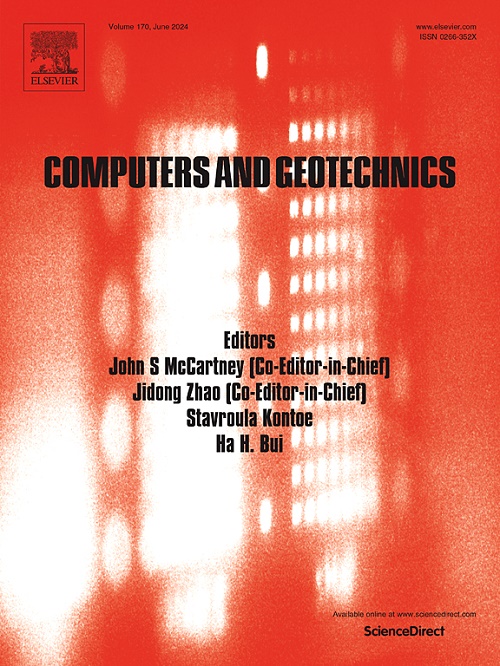Probabilistic analysis of ground surface settlement induced by super large diameter shield tunneling based on 3D random finite element method
IF 5.3
1区 工程技术
Q1 COMPUTER SCIENCE, INTERDISCIPLINARY APPLICATIONS
引用次数: 0
Abstract
The accurate prediction of ground surface settlement remains a crucial undertaking in shield tunnelling, particularly for tunnels with super large diameters. Instead of employing conventional deterministic analysis, this study employed 3D random finite element method (RFEM) to probabilistically investigate the longitudinal ground surface settlement induced by super large diameter shield tunneling. Through large quantities of numerical simulations, a new modified Logistic function with parameters of maximum ground settlement Smax, settlement upon face arrival S0, and settlement speed during face passage v was proposed to represent the longitudinal ground surface settlement curves. The probabilistic distribution of longitudinal ground settlement was transformed into a multivariate Gaussian distribution of Smax, S0, and v. A randomness transfer coefficient η was innovatively proposed to evaluate the effects of randomness transferred from modulus random field to the ground settlements. It was found that the mean values of Smax, S0, and v were rarely affected by random field statistics. The randomness transferring coefficient η was determined by the vertical and horizontal scales of fluctuation (δv and δh). The correlation coefficients between Smax, S0, and v were only sensitive to δh.
求助全文
约1分钟内获得全文
求助全文
来源期刊

Computers and Geotechnics
地学-地球科学综合
CiteScore
9.10
自引率
15.10%
发文量
438
审稿时长
45 days
期刊介绍:
The use of computers is firmly established in geotechnical engineering and continues to grow rapidly in both engineering practice and academe. The development of advanced numerical techniques and constitutive modeling, in conjunction with rapid developments in computer hardware, enables problems to be tackled that were unthinkable even a few years ago. Computers and Geotechnics provides an up-to-date reference for engineers and researchers engaged in computer aided analysis and research in geotechnical engineering. The journal is intended for an expeditious dissemination of advanced computer applications across a broad range of geotechnical topics. Contributions on advances in numerical algorithms, computer implementation of new constitutive models and probabilistic methods are especially encouraged.
 求助内容:
求助内容: 应助结果提醒方式:
应助结果提醒方式:


